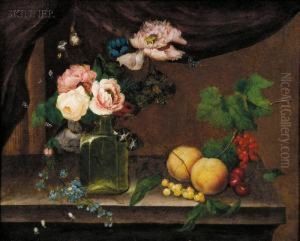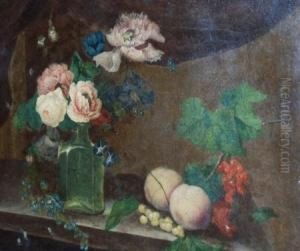William Quaker Pegg Paintings
William Billingsley, also known by the name William Quaker Pegg, was an esteemed English porcelain painter and manufacturer, whose work and innovations left a significant mark on the British porcelain industry during the late 18th and early 19th centuries. Born in 1775, Pegg initially embarked on his artistic journey at the Derby Porcelain Works, where his exceptional skills quickly became evident. Despite the promising start to his career, Pegg's life and work took a distinctive turn due to his personal beliefs and the choices he made because of them.
Pegg's affiliation with the Quaker movement had a profound impact on his professional life. His conversion to Quakerism is notably reflected in his decision to temporarily abandon his work in porcelain, which he felt conflicted with his religious convictions, particularly due to the use of bone ash in porcelain production. This period of his life illustrates the deep interconnection between Pegg's personal beliefs and his professional endeavors, a theme that is recurrent throughout his career.
Despite these challenges, Pegg's passion for porcelain could not be quelled. He returned to the industry with a renewed vigor, applying his talents at several prominent manufactories, including the renowned Pinxton and Nantgarw porcelain works. It was during these stints that Pegg developed and refined his signature style, which was characterized by exquisite botanical illustrations. His meticulous and vibrant depictions of flowers and plants earned him widespread acclaim, setting new standards for artistic excellence in porcelain decoration.
William Quaker Pegg's legacy is enduring, with his works highly prized by collectors and museums worldwide. His life story is a compelling narrative of the intersection between art and personal conviction, showcasing how individual beliefs can profoundly influence one's creative expression. Pegg's contributions to the field of porcelain art are celebrated for their technical innovation and aesthetic beauty, securing his place as a key figure in the history of British decorative arts. He passed away in 1851, leaving behind a body of work that continues to inspire and captivate admirers of fine porcelain.

